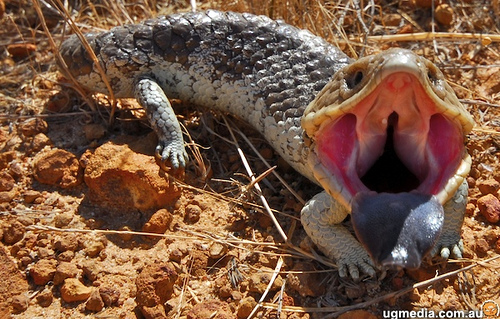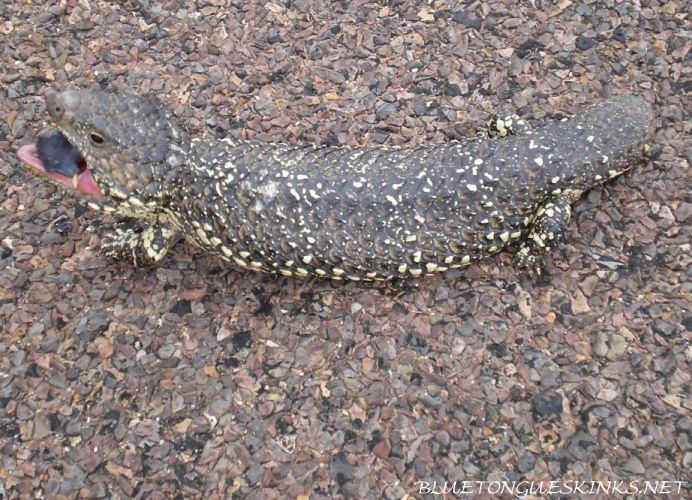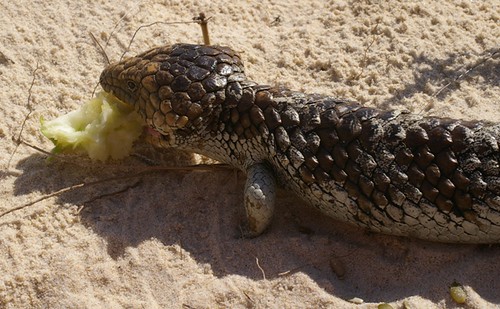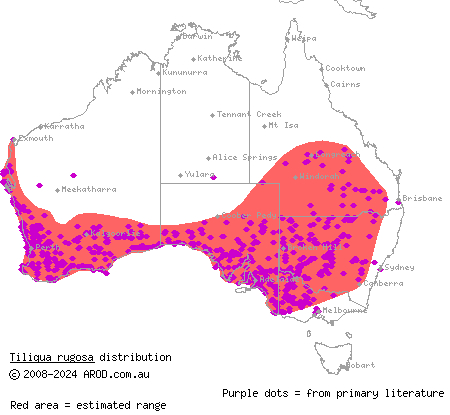Post by Ceratodromeus on Jan 5, 2016 8:41:08 GMT 5

Scientific classification
Kingdom: Animalia
Phylum: Chordata
Class: Reptilia
Order: Squamata
Family: Scincidae
Genus: Tiliqua
Species: T. rugosa
Subspecies
◾T. r. rugosa: Western Shingleback
◾T. r. asper: Eastern Shingleback
◾T. r. konowi: Rottnest Island Shingleback
◾T. r. palarra: Shark Bay Shingleback
Description
The shingleback skink, also known as the pinecone lizard, sleepy lizard, and bobtail, is one of the largest skinks native to Australia. Health adult individuals can measure anywhere from 22.5 to 32cm(8.8 to 12.5in)in snout-vent length{1}. tough most measure approximately 30cm(11.8in) in SVL{2}. These lizards can weigh anywhere from 325 to 850g in weight{1}. Like alternative common names may suggest, the shingleback skink is heavily armored. Depending on locality, these skinks range in coloration from a solid chocolate brown, to tan, or brown with white stripes. The head is large and triangular in shape, and the eyes are small. The tail is short, acting like a fat reserve when food is not readily available in its environment. Like many other members of the tiliqua genus, the shingleback skink has a bright blue tongue, which it will present to an animal that is harassing it.

Geographic range
This is a widespread species, that can be found throughout most of Southern Australia.
Dietary habits
The shingleback skink is a predominately herbivorous species, with as much as 80℅ of its diet consisting of plant material. Ripened fruit and fungi, Small invertebrates(insect larvae, Blattodea, Coleoptera, Hymenoptera and Orthoptera), small vertebrates, and even carrion have been documented in the diet of this lizard{3}.

Reproduction
This is a viviparous, monogamous species. As soon as they reach sexual maturity, these skinks will pair off. Males can be found frequently found following close behind a female once they have paired off. These pairings last as much as 50 days, and pairs will often relocate on another if they become separated. However, monogamy is not the rule for the species, some females have been found paired with multiple males in one season. Mating occurs in October or November, with a litter ranging from one to three young being born after a five month gestation period{4}.The young will often stay within their mothers' home range until they reach adult age -- at approximately three to five years of age.

References
{1} Bull, C. Michael, and Michael J. F reakeA. "Home-range fidelity in the Australian sleepy lizard, Tiliqua rugosa." (1999)
{2} Kerr, Gregory D., and Bull, Michael C.. "Exclusive core areas in overlapping ranges of the sleepy lizard, Tiliqua rugosa." Behavioral Ecology 17.3 (2006): 380-391.
{3} Shea, Glenn. "Diet of two species of bluetongue skink, Tiliqua multifasciata and Tiliqua occipitalis (Squamata: Scincidae)." Australian Zoologist 33.3 (2006): 359-368.
{4} Bull, C. Michael. "Monogamy in lizards." Behavioural Processes 51.1 (2000): 7-20.



